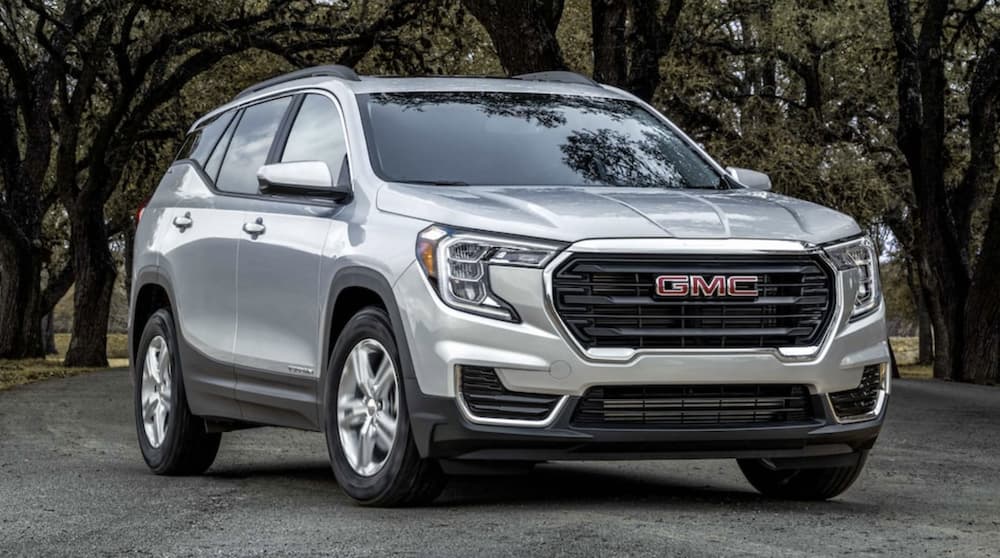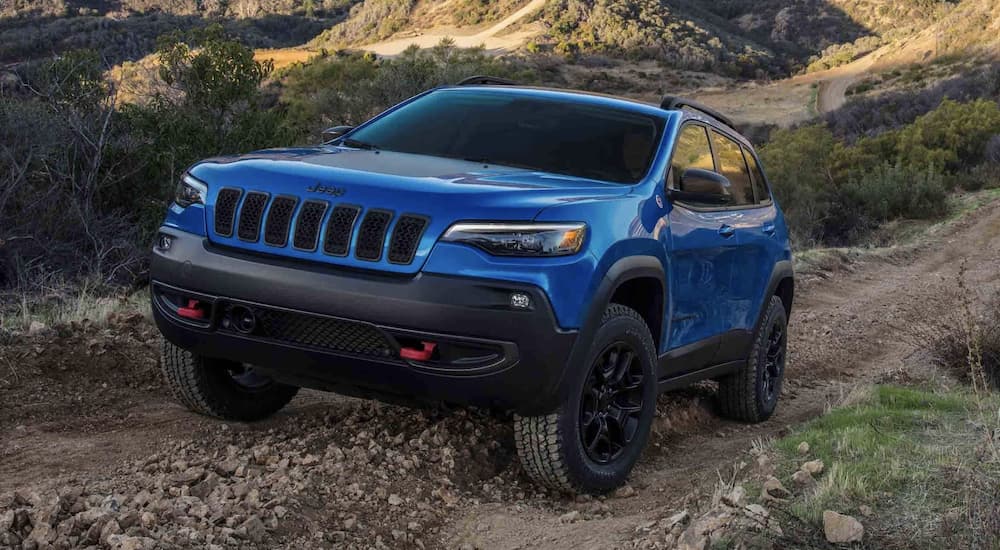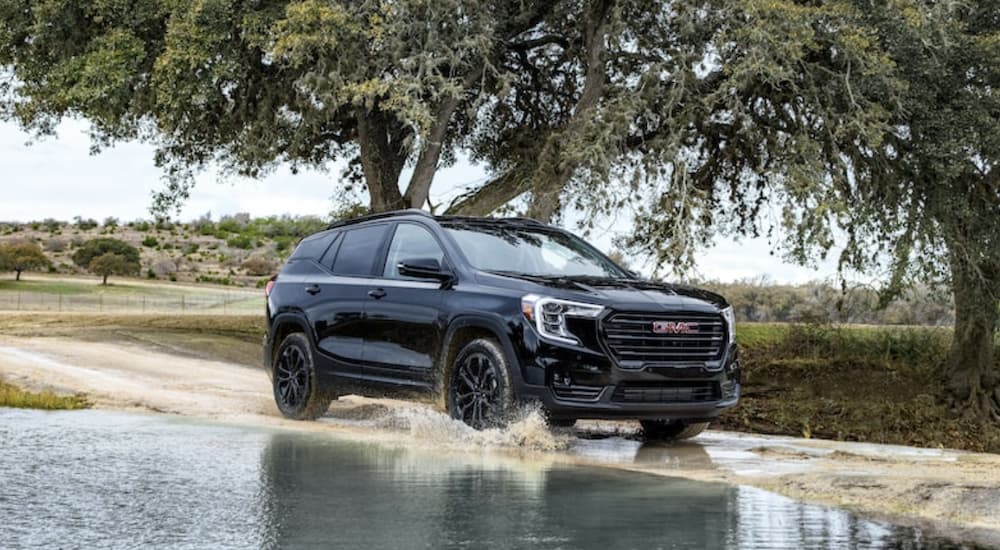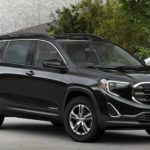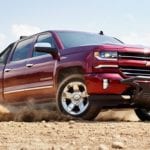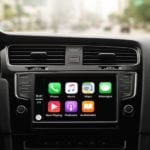This will sound weird, but when was the last time you purchased a phone with a cord? Unless you work at an office job, chances are that you’ve been using wireless phones for decades now. It didn’t stop there, did it? Wireless internet, phone charging, game controllers, keyboards and mice, and even wireless headphones have been ingrained into our daily lives, and in retrospect, the last twenty or so years have arguably seen more advancements in the technology space since the introduction of the television back in 1927. Technology has entered nearly every facet of our lives in one way or another, and some of the latest vehicles released utilize technology in fascinating ways. If we’re talking about the 2022 GMC Terrain vs 2022 Jeep Cherokee, it’s clear that one manufacturer wants its vehicles to be state-of-the-art, while others are more willing to stick to the past.
The thought of making our wireless devices more wireless leave have you scratching your head, but what I mean by this is that, whether you’re trying to charge your phone or connect to your infotainment center, there’s a strong chance that you’re still bringing that trusty old USB cable along for the ride. Great, but what if someone else wants to charge their phone? Vehicles commonly come with USB ports (two each in the case of the Terrain and Cherokee). The main difference, though, is that you won’t have as much need for the USB ports in the Terrain as in the Cherokee. Or, more specifically, not needing your USB ports for charging or syncing your phone means you can use those ports for more important things, like charging other devices with the Terrain.
Wireless Charging
Every year, the number of people who own smartphones increases. More specifically, more people are getting their hands on smartphones that support wireless charging. For example, my father still owns an iPhone 7 Plus, and my parents were trying to figure out why he couldn’t wirelessly charge his phone. It then occurred to me that iPhone 8 models and above are the only Apple phones that allow for wireless charging.
Of course, this makes sense, considering the iPhone 8 launched back in 2017. By that point, not too many phones on the Android side allowed for wireless charging at all. With that said, it’s virtually impossible to down-talk a vehicle that didn’t include wireless charging back in 2017.
That was then, and this is now. So, why do manufacturers think it’s okay to omit these features? Cost-effective measures? Doubtful. If you think it’s a cost-saving measure, let me simply point you to the fact that the Cherokee starts at half-a-dozen thousand more than the Terrain, but GMC had no issues with including wireless charging in the mix.
Not satisfied? Well, have some Wireless Apple CarPlay and Android Auto while you’re at it, and you’ve got a vehicle that’s intensely more feature-rich than a far costlier competitor. We’ll talk more about Wireless Apple CarPlay and Android Auto shortly. For now, directly focusing on wireless charging, consider this a feature that is a mixture of both necessity and quality-of-life improvements.
Depending on the type of driver you are and how tidy you keep your interior, your dashboard and console might be filled with different types of cords—especially on older vehicles, where plugging in your phone was purely for charging the battery, while music was handled via the auxiliary port. For these types of drivers, wireless charging is more of a necessity, and for those who keep one to two cables on hand at all times, it’s easily a quality-of-life improvement.
Best of all, there’s no learning curve whatsoever. Simply drop the phone onto the pad and you’re good to go. And, as you would with a USB cable if a passenger needs to charge their phone, then replace your phone with theirs on the pad—although it’s worth noting again: two USB ports can help with this, too.
Wireless Apple CarPlay and Android Auto
Thanks to the wonderful world of infotainment centers that we live in today, vehicles are kept up-to-date with the other pieces of technology in our lives—most notably, our phones. I’ve already discussed why wireless charging is so important, so let’s turn the topic over to something else: Wireless Apple CarPlay and Android Auto. There’s a strong chance you’ve either heard of (or even used) Apple CarPlay and Android Auto in the past, wireless or otherwise. However, for those who have never heard about what kind of versatility it lends to your infotainment center, there are a few things that I’d like to discuss.
As with wireless charging, some manufacturers are behind the times. While many of these manufacturers produce cars that include the wired variant of Apple CarPlay and Android Auto, there are a select few that still omit it altogether, or even reserve it for pricier trims in its lineup. Truthfully, there’s nothing wrong with using wired Apple CarPlay and Android Auto, but it’s certainly an inconvenience—given the alternatives that we have today.
Apple CarPlay and Android Auto launch when your phone is connected. In the case of the 2022 GMC Terrain, this is a wireless process. If you haven’t used either of these infotainment center features before, just know it’s software that makes your infotainment center screen not only look like your phone (which will be familiar to you) but include the apps that you depend on every day. Let’s say you’re either unsatisfied with your infotainment center’s onboard navigation or, more commonly, not subscribed to the service. You can use any of the navigation apps you want, provided they’re on either smartphone.
Combined with wireless charging, having wireless Apple CarPlay and Android Auto means you don’t need your phone anywhere near you while driving—whilst simultaneously clearing any clutter surrounding your interior. Need to answer a phone call? You can do that without touching your phone. Just interact with the vehicle’s infotainment screen! The same goes for picking your favorite song, sending a text message, or talking to a virtual assistant, such as Siri.
4G LTE Wi-Fi Hotspot
Hotspots certainly aren’t anything new. My first mobile hotspot for a laptop was back in 2006—and even then, they weren’t brand new by that point. Eventually, mobile hotspots made their way into vehicles, and it’s something that many drivers have come to expect with their purchase.
With that said, GMC decided it would give drivers a free 4G LTE Wi-Fi hotspot with every Terrain. What of the Cherokee? The Cherokee not only doesn’t come standard with a hotspot, but it doesn’t offer one at all. Would I consider this another cost-saving measure? Again, no, I don’t think this is a cost-saving measure—and I can’t think of a logical reason why a manufacturer as prominent as Jeep would withhold this feature from the Cherokee. This is especially confusing given how adventurous Jeep’s target demographic tends to be with their vehicles.
Having a 4G LTE Wi-Fi hotspot has plenty of advantages. Firstly, if you’re in an area with a rather spotty data connection, there’s a strong chance that your vehicle’s hotspot may retain a better signal. Having a hotspot also means that you’re not constantly chewing through your phone data, which is important to note for those with data caps—albeit you’ll still be paying a monthly fee to use the hotspot.
People can connect their wireless devices with ease to stay in touch with work, family, and friends just about anywhere. Plus, thanks to password protection, you can ensure nobody sneaks their way into your internet connection. An in-vehicle Wi-Fi hotspot is perfect for camping trips—and exceptionally useful everywhere else.
